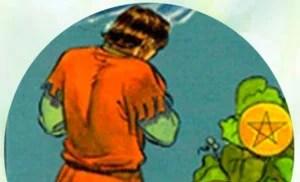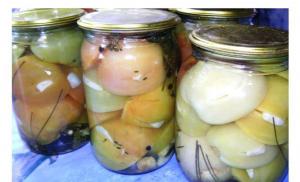Forecasters in the nature of rain. Animals - weather forecasters
The scientific world has about 700 species of animals that sense the approach of natural disasters. Back in the 80s of the last century, Italian scientists proved that animals are brought into a state of panic by positively charged ions, the concentration of which in the air rapidly increases before a natural disaster. Inhalation of ions causes increased heart rate, headache, and most importantly, increased production of the hormone adrenaline by the body. It is these factors that lead animals into a state of anxiety and panic. Moreover, in enclosed spaces the number of ions is much higher than outside, which is why animals tend to escape from the house. In seismic zones there are even laboratories for monitoring sensitive animals - cats, dogs, hamsters, etc. Based on their behavior, forecasts are made about upcoming earthquakes, floods, hurricanes, storms, etc.
Meteorologists, of course, try to predict the weather using modern electronic instruments, computer processing and space satellites. But more often than not, the most ordinary house Murka or yard Barbos foresee weather changes 100 times more accurately than the most sensitive instruments. Especially if we are not talking about a banal thunderstorm, but about natural disasters like an earthquake.
Cats are the best weather forecasters
Cats are considered the most weather-sensitive pets. If in winter a cat settles closer to the radiator, tries to crawl under the owner’s blanket, or sleeps curled up, frost will soon arrive. But if Murka, on the contrary, stretches to his full height during sleep, wait for a thaw.
Dogs: did you order rain?
Dogs go into hibernation before the rain and go for a walk without much enthusiasm. Before a heavy rain with a squally wind, four-legged animals often hide in a corner, hide under a table or chair, and are very reluctant to respond to the owner’s call. Another sign of a heavy rainfall is a dog rolling on the grass and whining softly.
Dogs show anxiety long before the disaster begins, sometimes even two weeks. They bark loudly, howl protractedly, cling to their owner, and just before the start of tremors they pull the person outside, thereby trying to save him. If the owner remains indifferent to the calls of his four-legged friend, then even the most well-mannered and faithful dog, sensing impending danger, can disobey his owner and run away wherever his eyes look.
By the way, it has been noticed that dogs and cats living in the countryside are more sensitive to natural changes than their urban counterparts.
The weather will be predicted by... a hamster
And before the onset of cold weather, hamsters diligently insulate their house with available “building materials”, and in anticipation of warming, on the contrary, they get rid of “excesses”.
Animals sense the approach of an earthquake, the epicenter of which is several hundred kilometers away. For example, ferrets, guinea pigs and rabbits, in anticipation of a natural disaster, rush around the cage anxiously and tremble all over.
Winged meteorologists
Parrots also know how to predict the weather for the near future. Usually noisy and talkative, is your budgie silent? This means that no heat is expected in the near future. Domestic parrots and canaries are especially popular in Kamchatka. After all, these birds, with their loud screams, notify their owners about a volcanic eruption.
Fortune teller wah
Even those frogs that live in home terrariums are very sensitive to weather changes. With a loud croak they notify about the approach of good weather, and if there is rain, the amphibians fall silent or, huddled under a snag, grumble quietly. And there are also species that can even change skin color before bad weather.
Aquarium weather center
Fish dig in the ground - expect good weather; swim near the surface of the water - get ready for bad weather. Usually inactive, loaches lie on the bottom, but when bad weather approaches, they begin to get restless and rise to the surface of the water 20 times per minute! In earthquake-prone areas of Japan, aquarium inhabitants are kept specifically to predict an impending earthquake or approaching storm. After all, the fish begin to worry a week before the disaster begins, while the instruments give a warning only 2 hours in advance!
Village weather forecasters
Poultry senses electrical tension in the air better than other animals. If geese and chickens hide in a poultry house in broad daylight, there will be a thunderstorm.
There are folk signs, although scientifically unsubstantiated, that have been proven over the centuries. If in winter goats knock their feet, flap their ears and sneeze, there will be heavy snowfall. The chicken stands on one leg - it will be cold. Little piglets squeal - expect frost, big pigs itch - wait for warmth.
But it is known for certain that village animals sense the approach of natural disasters. Before an earthquake, geese become aggressive and scream deafeningly, and chickens fly into trees and cackle loudly. Goats and sheep become very restless, thereby warning shepherds in high mountain villages about tremors and rock landslides. Cows do not react in any way to minor weather changes, but a few hours before a storm or earthquake they begin to worry and moo loudly. Interestingly, cows of a breed bred in earthquake-prone mountainous areas sense the approach oftroubles before their brothers from the middle zone. They, like horses, try to break out of the stall and run away.
In contact with
Sidrelev Alexey, 4th grade student, 2012
research work of a 4th grade student, won 2nd place at the school level
Download:
Preview:
MUNICIPAL BUDGETARY EDUCATIONAL INSTITUTION
"KOPIEVSKAYA SECONDARY SCHOOL
WITH IN-DEPTH STUDY OF INDIVIDUAL SUBJECTS »
SECTION: “PRIMARY CLASSES”
RESEARCH WORK ON THE TOPIC:
” PLANTS AND ANIMALS FORECASTERS”
Completed:
Sidrelev Alexey
4B class student
Scientific adviser:
L. V. Kazatskaya,
Primary teacher
Classes
Kopevo, 2012
Introduction. ………………………………………………………………………………3
Main part……………………………………………………………4
Plants that predict weather……………………………….4
Animal habits that predict the weather………………5
A) weather prediction by insects………………………..5
B) birds are weather predictors……………………………..5
C) weather predictors – fish and amphibians…………….5
D) mammals - weather forecasters…………………..5
Conclusion………………………………………………………………………………….7
References………………………………………………………8
Introduction
One summer on TV in the Weather Forecast program they said that tomorrow would be a clear and sunny day, and my parents and I decided to go to the river. The morning was indeed sunny, but my mother said that our trip was canceled as it would rain during the day. I didn’t believe my mother, I was upset, but her predictions came true. When asked how she knew that the weather would change, she replied that nature told her. I became interested in finding out who and what in nature can predict the weather so accurately, even if weather forecasters with their complex and smart technology often make mistakes in weather forecasts. I think this is very interesting to a lot of people.
So I set myself target : find out which plants and animals can predict the weather for a person.
Tasks:
- Collect and analyze information about plants and animals that predict the weather.
- The collected material should be described, systematized and offered for practical use to your friends.
Object of study- plants and animals.
Subject of study– signs of plants and animal habits that indicate changes in the weather.
Hypothesis – I assume that the ability to determine the weather based on plants and animal behavior is of great importance for humans.
Plants that predict weather
You can determine what the weather will be like in the next few hours or the next day based on many signs. It is also determined by some plants. Let's pay attention to the flowers in our yard: the sky is clear, the weather is good, and the mallow and marigolds have already tightly folded their petals and seem to have withered - which means it will rain. After the rain the petals will open again.
Woodlice, a garden weed, reacts just as sensitively to weather changes. Its inconspicuous flowers open early in the morning: if they have not opened by nine o'clock in the morning, it will almost certainly rain.
There are plants that predict the weather in the meadow and forest. So the clover shrinks, brings its leaves closer together and bends over - towards bad weather. The dandelion squeezes its ball, the mother and stepmother flowers close - it will rain.The bindweed closes its corolla before the rain, and on the eve of a sunny day it always opens it even in cloudy weather. Before the rain, burdock cones open their hooks.Rabbit cabbage flowers remain open at night - before rain, and close - in good weather.
Weather prediction by insects.
Insects, birds and mammals are very sensitive to weather changes.
Green grasshoppers, for example, do not chirp in the evening before rain, and if they chirp a lot, the weather will be good in the next 24 hours. A ladybug, taken on your hand, quickly flies away - good weather. Before good weather, flies wake up early and begin to buzz animatedly. Before bad weather they sit quietly. When midges swarm over garden beds in the warm evening hours, it will certainly rain. When the weather is clear and good, the entrances to the anthill are open and the ant becomes noticeably more animated.
Birds are weather forecasters.
You can also tell the weather by the behavior of birds. Before bad weather, birds scream loudly, do not sing songs at all, fly a lot and low, circle, and pluck themselves. When the birds fall silent, expect thunder. In clear, good weather, swallows and swifts fly high above the ground. Crows play in the air - the weather will be good. Birds sit on the ground, sing cheerfully - for good weather. And if they sit on roofs and hide in nests during the day, it means rain.
Weather predictors - fish and amphibians;
When bad weather occurs, fish jump out of the water and catch flying insects. When it rains, frogs stay on the surface of the water, croak and stick out their snouts.
Mammals are weather forecasters.
If a dog rolls in the snow, it means bad weather, and if it rolls on the ground or digs heavily in the ground, it means rain.There are many legends about cats. But, unfortunately, not everything is confirmed by science. However, many things turn out to be true. For example, if a cat goes to bed in her favorite corner, curled up in a ball, then this indicates that there will be frost soon. If she sharpens her claws too often, it also means bad weather. And for the warmth she lies stretched out in the middle of the room. Another sign is that if a cat, who loves to be outside for long periods of time, does not leave the house, it means she is afraid of getting wet, and even if it is sunny outside, it means that the weather will soon change and it will rain.
Conclusion
A path runs through the meadow,
Dives left, right,
Everywhere you look there are flowers around,
Yes, knee-deep grass.
There are so many interesting things around!
Stop and look carefully and then nature will reveal its secrets to you. You just need to look, observe and see it.
Read nature and you will learn a lot of new, interesting and useful things about plants, birds and animals that will definitely be useful to you in life.
Bibliography
- Geographical calendar "Land and People" 1964
- Yu. Dmitriev. "Neighbors on the planet." Publishing house, Moscow, “Det. literature" 1991
- B.B Zakartovich. "With love for nature." Publishing house Moscow, “Pedagogy” 1976
- Online pet supply store “Aquamagazin” 2010.
- A.A. Pleshakov. Atlas – determinant “From earth to sky.” Publishing house M. Moscow. "Enlightenment" 2007
Preview:
To use presentation previews, create a Google account and log in to it: https://accounts.google.com
Slide captions:
MBOU "Kopyevsk secondary school" Plants and animals - weather forecasters
One summer on TV in the “Weather Forecast” program they said that tomorrow would be a clear and sunny day, and my parents and I decided to go to the river. The morning was indeed sunny, but my mother said that our trip was canceled as it would rain during the day. I didn’t believe my mother, I was upset, but her predictions came true. When asked how she knew that the weather would change, she answered that nature told her. I became very interested in finding out who and what in nature can predict the weather so accurately, even if weather forecasters with their complex and smart technology often make mistakes in weather forecasts. I think this is interesting to many people. Therefore, I set myself a goal: to find out which plants and animals can help a person predict the weather
Objectives: 1. Collect and analyze information about plants and animals that predict the weather. 2. Describe, systematize and offer the collected material for practical use to your friends. The object of research is plants and animals. The subject of the study is the characteristics of plants and animal habits that indicate changes in the weather. Methods of work - observation, comparison, study and analysis of literature about plants and animals Hypothesis - I assume that the ability to determine the weather from both plants and animal behavior is of great importance for humans
You can determine what the weather will be like in the next few hours or the next day based on many signs. It is also determined by some plants. Let's pay attention to the flowers in our yard: the sky is clear, the weather is good, and the mallow and marigolds have already tightly folded their petals and seem to have withered - which means it will rain. After the rain the petals will open again.
Woodlice, a garden weed, reacts just as sensitively to weather changes. Its inconspicuous flowers open early in the morning: if they have not opened by nine o'clock in the morning, it will almost certainly rain.
There are plants that predict the weather in the meadow and forest. So the clover shrinks, brings its leaves closer together and bends over - towards bad weather.
The dandelion squeezes its ball, the mother and stepmother flowers close - it will rain.
Before the rain, burdock cones open their hooks.
Insects, birds and mammals are very sensitive to weather changes. Green grasshoppers, for example, do not chirp in the evening before rain, and if they chirp a lot, the weather will be good in the next 24 hours.
A ladybug, taken on your hand, quickly flies away - good weather.
Before good weather, flies wake up early and begin to buzz animatedly. Before bad weather they sit quietly.
When midges swarm over garden beds in the warm evening hours, it will certainly rain.
When the weather is clear and good, the entrances to the anthill are open and the ants are noticeably revived.
You can also tell the weather by the behavior of birds. Before bad weather, birds scream loudly, do not sing songs at all, fly a lot and low, circle, and pluck themselves. When the birds fall silent, expect thunder.
In clear, good weather, swallows and swifts fly high above the ground.
Crows play in the air - the weather will be good.
When bad weather occurs, fish jump out of the water and catch flying insects.
When it rains, frogs stay on the surface of the water, croak and stick out their snouts.
Dogs and cats are considered the leaders among animal weather forecasters. If a dog rolls in the snow, it means bad weather, and if it rolls on the ground or digs heavily in the ground, it means rain.
There are many legends about cats. But, unfortunately, not everything is confirmed by science. However, many things turn out to be true. For example, if a cat goes to bed in her favorite corner, curled up in a ball, then this indicates that there will be frost soon. If she sharpens her claws too often, it also means bad weather. And for the warmth she lies stretched out in the middle of the room. Another sign is that if a cat, who loves to be outside for long periods of time, does not leave the house, it means she is afraid of getting wet, and even if it is sunny outside, it means that the weather will soon change and it will rain.
A path runs through the meadow, Dives to the left, to the right, Everywhere you look there are flowers around, Yes, knee-deep grass.
There are so many interesting things around! Stop and look carefully and then nature will reveal its secrets to you. You just need to look, observe and see it. Read nature and you will learn a lot of new, interesting and useful things about plants, birds and animals that will definitely be useful to you in life.
THANK YOU FOR YOUR ATTENTION!
Surely each of us, before going outside, will definitely try to find out about the upcoming weather for the day. We all know that the weather is quite a capricious lady, so there are practically no people who want to be caught off guard by a downpour in the middle of the day. Nowadays, to find out about the upcoming weather, it is enough to turn on the TV, the Internet or open the newspaper to the desired page.
Now imagine that we, for example, moved to the 16th century, when human life was completely dependent on nature, and we do not have a single special instrument for observing the weather. How can you find out about approaching bad weather in this case, you ask? What did our ancestors do in this case?
It turns out that in the distant past, a person observed the weather, various natural phenomena, and compiled various signs to “predict” and “anticipate” the weather. And in this he was helped by faithful assistants and friends - mustachioed, tailed and feathered, namely our smaller brothers. Think about it, have you paid as much attention to the behavior of your pet as our ancestors did? I think not, but in vain...
It is known that our pets are very sensitive to the vagaries of the weather, and they know about upcoming weather changes no worse, and maybe even better, than a group of meteorologists armed with special observation instruments. Scientists count about 600 representatives of the animal world that have “synoptic” abilities. But let's do everything in order, and we will start, first of all, with pets, or rather with the most graceful representatives of tailed and mustachioed animals - cats.
It has been noted that of all four-legged animals, the cat is the most sensitive to weather changes. In addition, she is credited with the ability to foresee various events in the house, for example, the arrival of guests, before whose arrival she washes her face with her paw, but for us, of course, more interesting are her meteorological abilities, which she has very well developed. It is known that when the weather changes, cats become lethargic, sleep a lot, and some even refuse to eat. Before rain or strong wind, the Murka sharpens its claws; if it scratches the floor or table leg, it means it is exposed to wind and snowstorms. But before it gets cold, he curls up into a ball and sleeps, covering his face with his paws. But if your furry pet is stretched out on its back with its belly up, expect warming.
Residents of seismically dangerous areas try not to lose sight of changes in the behavior of cats and carefully monitor their cats. If your cat is acting restless, agitated, meowing loudly, hiding, and trembling, it is time to move to a safer area.
During World War II, cats saved their owners more than once. As it turned out, the Murziks have an uncanny ability to anticipate the beginning of the bombing. The cats' fur stood on end and they began to make hissing and irritated sounds. This ability of cats was so valuable during the war that a special medal was established in Europe with the words engraved on it: “We, too, serve our Motherland.” The medal was awarded to the cats that saved the greatest number of human lives.
But tailed weather forecasters are especially respected by sailors. Experienced sailors believe that cats can not only warn of danger, but also know how to drive away a storm, only if the Murzik has been treated well. There are cases when ships were in distress immediately after the ship's cats were overboard. Swedish sailors believe that only a kitten or cat that has grown up on this ship can be taken on a voyage. According to legend, alien cats bring bad weather with them because storms hide in their tails. Japanese sailors revere tortoiseshell and white cats, as they believe that cats of this color can pacify the elements.
Our faithful four-legged friend, the dog, has no less ability to predict the weather. If the dog digs the ground intensively or gets into the water or eats grass, then expect rain; rolls on the ground in the summer, eats little and sleeps a lot - to bad weather, in winter - to a blizzard; the dull barking of dogs in winter means snow. We noticed that if sled huskies ride in the snow in the evening, expect a snowstorm at night, and often a long one.
Many birds are highly sensitive to changes in atmospheric pressure, the slightest fluctuations in illumination and the accumulation of electricity in the atmosphere. Changes in the behavior of birds are manifested in the characteristics of singing, screaming, foraging, timing of arrival and departure. For example, in Cuba, a parrot has become widely known for accurately predicting the weather. Before a hurricane, a parrot whistles a funeral march, before a thunderstorm - sambas, before rain - Strauss melodies. Let's look out the window and see how the birds behave.
Pay attention to the sparrow. In good weather, sparrows are cheerful, active, and sometimes pugnacious. But as soon as they become lethargic, quiet, sit puffed up, gather on the ground or bathe in the sand, it will rain. They fly in flocks from place to place - in anticipation of upcoming winds; they flutter in the morning - in anticipation of rain.
The strong cooing of a dove indicates upcoming hot weather; pigeons hiding means bad weather.
It is interesting that the cuckoo crows regularly - to indicate warm weather and the end of cold mornings, makes sounds similar to croaking - to indicate rain, and sits on a dry tree - to indicate cold weather. Often we see how a gray crow sits on a tree branch or a fence, hunches over, lowers its wings, just like an ancient old woman. He sits and croaks dully and hoarsely. “It’s raining,” we grumble dissatisfied. And indeed, this often happens. Of course, a crow may have other reasons for its “bad” mood, but, as a rule, this mood precedes “uncomfortable” weather for the crow.
Swallows, swifts and woodpeckers are extremely sensitive to weather changes, whose behavior depends not on themselves, but on the insects on which they feed. Ornithologists claim that in the summer, in good weather, when the air is dry, strong air currents lift many insects that swallows feed on high up. Swallows rush after them. But before the rain, the air becomes more humid, the thin wings and hairs covering the body of insects swell, become heavier and pull down. Insects hide in the grass, and if they fly, they fly low. So the swallows are forced to catch them near the ground, or even just pick them up from blades of grass. So, if you spot a low-flying swallow, wait for the rain. The woodpecker feeds mainly on insects and larvae, obtaining them under the bark or in the thickness of trees. In good and dry weather, insects and larvae do not hide under the bark, and the woodpecker has difficulty finding food. But now bad weather is approaching, insects, anticipating it, take refuge under the bark and in the cracks of trees, and the woodpecker enthusiastically begins to knock and announce bad weather. Mostly birds huddle close to houses - to snow, fog, bad weather; play - towards the wind; they stop singing in the heat - when it rains and more often with a thunderstorm; in the evening they feed longer than usual - in anticipation of frost; flying low means rain.
Crickets and grasshoppers are especially sensitive to changes in air temperature. Having unraveled the biological mechanism of their behavior, English scientists from the Royal Institute of Entomology were able to determine the air temperature not using a thermometer, but using a watch with a second hand. To do this, just count how many times a grasshopper or cricket chirps within 15 seconds, and add 40 to the resulting number; the resulting amount will indicate the air temperature in Fahrenheit. Determining temperature in Celsius requires more complex calculations. A grasshopper chirping loudly late in the evening means a good day; if it is silent, it means rain. Fireflies glow more than usual before warm, good weather. Beautiful large butterflies do not sit on flowers before sunny weather, but before rain they will happily sit on a flower. If a moth comes to visit you, expect strong winds.
Bees are sensitive to weather changes; they become angrier and sting most often before a drought. An excellent “living barometer” is some fish species. If on a cloudless day the bite suddenly stops, the fish rushes violently in the water, jumps out and catches midges - it will soon start to rain. For example, a catfish floats to the surface of a river in anticipation of a thunderstorm, but crayfish climb out of the water to the shore before bad weather.
One of the most accurate forecasts is the frog forecast. The frog's skin needs constant hydration, which is why in hot weather frogs sit in the water, and before rain, when the air humidity increases, they go out for a walk. In Rus', in the old days, this was also noticed and they began to use the frog as a home barometer. It is known that she lived in a vessel of water with a small wooden ladder. You probably guessed that when the “wah” climbs up the stairs - wait for the rain, floats in the water - it will be dry and clear. Also, the respiratory system of a frog is very sensitive to even a slight increase in humidity. This is the reason that before the rain, the “wahs”’ mouths do not close, and they croak heart-rendingly.
Fishermen, hunters and tourists use so-called “leech” barometers. Leeches, like fish, react to changes in atmospheric pressure by rising to the surface of the water before bad weather. They are placed in a glass jar with a layer of sand at the bottom, half filled with river water, and the jar is tied with gauze on top. If leeches begin to stick to the walls of the dish and stick out of the water - it means rain; they swim quickly, wriggle, trying to stick to the walls of the dish at the surface of the water - this means strong winds and thunderstorms, they remain calm in the water, more often at the bottom - it means good weather.
The main thing that people's observers pay attention to is the crowing of roosters. Their early and generally untimely singing foreshadows bad weather and a change in weather. So, for example, in the Kharkov province, local residents noticed that if a rooster crowed at sunset, then a change in the weather is expected, but if they sing after 10 o’clock in the evening, then the night will be quiet and good.
But chickens cackle, pick their feathers or pluck, walk in the middle of the street - to bad weather, swim in the sand and flap their wings - to rain, fly up onto high objects in a barn, under a canopy - to quick rain, walk in the rain - to prolonged rain, early in winter they sit on a roost - it means frost, and if they twirl their tails or flap their wings - it means a blizzard. Hens place chickens under themselves or take them to shelter - to bad weather.
Cattle are extremely sensitive to the vagaries of weather. If a cow is in a hurry to return to the stall, it means cold. In hot weather, cattle lie down in the open, lie on their right side or gather in a heap - predicts rain, roar loudly in the evening - bad weather, drink little water, and sleep during the day - predict rain. There are relatively few signs about horses, but some of the observations are quite correct. A horse snores - to bad weather, lies down on the ground in the summer - to wet weather, snorts - to warmth, shakes his head and throws it up - to rain, kicks with his hind leg in the summer - to warming or bad weather, in winter - to snow.
They say that one day on a clear sunny day, Isaac Newton went out for a walk and met a shepherd with a flock of sheep, who advised the scientist to return home if he did not want to get caught in the rain. Newton looked at the sky, smiled and moved on. Half an hour later it began to rain heavily, thoroughly soaking the scientist.
Surprised, Newton asked the shepherd how he predicted rain so accurately. The shepherd laughed and replied that it was not he who predicted it, and pointed his hand at the ram. Even more surprised, Newton looked questioningly at the shepherd. Then the shepherd explained that he determined the onset of rain by the wool of the ram. Indeed, animal hair has the ability to swell and lengthen before rain and in damp weather due to the filling of the pores of the hairs with water. Sheep wool becomes softer and somewhat straightens, but in dry weather, on the contrary, it curls. Experienced cattle breeders can accurately identify these changes in coat.
We have completely forgotten about the piglets, whose squealing indicates an approaching cold snap in winter and bad weather in summer.
There are signs for the weather and wild animals, but there are not many of them, since, as you guessed it, they are more difficult to observe. In Chuvashia, they noticed that before the cold, a hare runs away from a person from afar - very sensitively. If wolves howl near your home, it means it will be frosty. Small mice also give rise to some signs about the weather. If in the summer the mice are making a fuss in the field: squeaking, running, chasing one after another - expect good weather in the morning, but if they sit quietly in their holes, most likely there will be bad weather. In Mexico, bats have been observed to circle in large numbers when the weather is good. Beavers work all night for rain. On warm days, the little fox-sister lies in the snow - a sign of upcoming frosts. And before the rain, a badger will never take her cubs out of a warm hole for a walk. We noticed a chipmunk that, on a sunny, clear day, begins to wash itself and whistle sharply, which means it will rain soon; in the morning it begins to whistle, indicating a sharp change in the weather.
So far, we have looked at the so-called short-term forecasts, when animals predict a quick change in the weather, but there are also long-term forecasts for the next month, two or even a whole year. For example, if in August - October the horse does not stay in the pasture and the wool does not lie smoothly on it, the winter will be harsh. The bear determines in the fall what kind of spring it will be, and chooses a den for itself in such places so that the water does not flood its winter refuge. It has been noticed that if moles place holes in their burrows to the north - for warm weather, to the south - for cold weather, to the east - for dry weather, and to the west - for damp weather. In the fall, they store a lot of stubble or straw in their burrows - for a cold winter, and if they do not insulate their nests in the fall - for a warm winter. These animals foresee in advance how much the river will flood, so they build their underground passages above the water level in the river during floods. If there are more hares than usual - a dry summer, fewer - a damp summer, the fur is thicker and fluffier - a cold, harsh winter. The bunny's fur turned white in the fall earlier than usual - for the imminent onset of winter. We noticed in the summer that a lot of wasps appeared - by the cold winter, on the contrary, a lot of cockchafers - by the hot summer. If a bullfinch “squeaks” in the fall, it means early winter. Wild ducks or geese fly away early - for early winter, and arrive fat - for a long, cold spring. Squirrels build their nests high for warm winters, low for cold frosty winters.
So we looked at the most common and well-known signs based on animal behavior. It turns out that if we show a little more observation and attention to our pets, they will become our irreplaceable “tailed weather forecasters.” While watching your pets, do not forget that they are sensitive not only to weather changes, but tailed animals also sense your mood well. Of course, each pet is unique in its own way, has its own character, habits and manners, this should not be forgotten when observing. I hope that from now on there will always be only the most accurate predictions in your home! Sunny mood and clear weather, friends!
Ermolov A.S. Folk weather research. M. 1995. Pp. 66-67.
Khrenov L.S. Folk signs and calendar. M. 1991. Pp. 32-33.
On the use of folk signs about the weather. Kuibyshev, FOL Privolzhskhydromet. Page 38-39
Khrenov L.S. Folk signs and calendar. M. 1991. pp. 39-40.
Ermolov A.S. Folk weather research. M. 1995. Pp. 57-58.
On the use of folk signs about the weather. Kuibyshev, FOL Privolzhskhydromet. 1988. Pp. 42-43
Khrenov L.S. Folk signs and calendar. M. 1991. Pp. 41-42.
Museum Researcher
"Meteorological station of Simbirsk"
Ivanova A.L.
Every day, weather forecasters from different parts of the world prepare a weather forecast for us. But, despite modern technology and rapid technological progress, this information often turns out to be inaccurate.
You will be surprised, but animals are the best weather predictors. It is by their behavior that you can find out an accurate forecast that will never let you down. Today you will learn what animal and plant weather predictors exist, what you should pay attention to in order to find out an accurate forecast.
Almost all animals have great sensitivity to weather changes. For example, frogs are one of the most accurate predictors. They have very thin sensitive skin, so in hot weather amphibians stay in the water, and before it rains they come out. Loudly screaming frogs foretell a downpour, and if the singing of the frogs subsides - cold snaps and frosts.
You can also find out the forecast by leeches, which, like fish, float to the surface of the water before bad weather. If there is no body of water near your house, just watch the birds. It will rain, if they gather in the trees and scream, swim in puddles, it will be warm. There are also signs about pets about the weather.

How do cats predict the weather?
- Cats are the most sensitive pets. It’s very easy to look at cats, just by observing their behavior:
- If the cat curls up into a ball, frost is expected.
- Sleeping on your back with your stomach up - it will be warm and sunny.
- A sneezing cat predicts rain.
- An animal sharpens its claws on furniture - a sign of strong weather changes.
- Tucks his paws in his sleep - cold weather is coming.
- Bad weather is foreshadowed by a cat scratching the floor.
Scientists claim that cats have a very high sensitivity to changes in atmospheric pressure among all animals, so the “cat” forecast is the most accurate and reliable.
Signs about dogs
- Dogs are also good weather forecasters. Pay attention to your four-legged friend. Here are some signs about dogs, knowing which you can predict bad weather.
- The dog is rolling on the grass - it will be rainy and windy.
- A dog wallowing in the snow warns of a blizzard.
- If the dog gets into the water, there may be a downpour.
- Changes in weather are also indicated by poor appetite and drowsiness in the dog.
- The dog curls up into a ball - a snowstorm and cold weather are coming.
- If in snowy weather animals frolic in the snow and run after each other, expect warming.
You may be surprised, but not only pets can sense changes in climate conditions. Livestock also has this feature. For example, to find out the weather for the morning, you need to watch a cow in the evening. If she drinks little and eats a lot of grass, the morning will definitely be rainy.
Rams and sheep bump their foreheads against the strong wind. But before bad weather, horses begin to wheeze loudly or lie down on the ground. Pigs react differently to an upcoming storm. They pull off the straw and burrow inside, clinging tightly to each other. All pets do this when they sense the approaching cold and bad weather.

Forest animals
It is quite interesting to observe the behavior of forest animals to find out the weather. This is a great opportunity to spend time outdoors and get closer to nature. You can find out what kind of winter it will be like by the placement of the squirrel's hollow. If it is too low on the tree, this portends severe frosts and a harsh winter, but if it is high, winter will delight you with relatively warm weather.
Birds are particularly sensitive; they react in a special way to weather changes with their behavior. For example, orioles make melodious sounds on fine days and scream if rain is coming. A strong wind can be foreshadowed by crows that perch on tree branches closer to the trunk.
If birds climb to the tops of trees and hide their heads under their wings, then frost will soon strike. If they descend to the ground, warming is expected. Sparrows can also sense changes in atmospheric pressure. By their lethargic state, you can understand that there will be bad weather. But happy chirping means warming and improving weather conditions. Everyone has long known the signs of swallows. If they fly low, there will be a thunderstorm; if they fly high, the day will be dry and warm.

Some poultry can also help detect bad weather. For example, ducks and geese hide their heads under their wings, and chickens flap their wings only if cold weather and rain are expected. The drooping tail and drooping plumage of these birds portends rain. Hens hide their chicks under them before a thunderstorm. A rooster crowing in the evening announces changes in the weather.
You will be surprised, but you can find out the weather not only by animals, but also by observing insects, because they are also sensitive to its changes. If there are a lot of spiders, then the weather will be good and stable, but if they are not visible at all, a thunderstorm is expected. Wet weather is also indicated by a spider sitting motionless in the middle of the web.
Before a hot day, flies appear in the morning, but before it gets cold, they hardly appear. If there are a lot of beetles in the spring, then the summer will be dry. And if you accidentally see a swarm of dragonflies, then expect precipitation in the next few hours. The chirping of grasshoppers and bright fireflies foretell good weather for the whole day.

Signs with fish
Many species of fish are acutely aware of weather changes. For example, most aquarium fish lie on the bottom if the weather is good, but if they rush around the aquarium and muddy the water, it will rain. Fish in reservoirs also have the ability to predict the weather.
If a fish jumps out of the water and catches insects, then most likely it will rain. Roach and crucian carp hide at the bottom before a thunderstorm, while the loach swims out. Seeing a catfish on the surface of the water is a harbinger of warming.
Scientists are still trying to understand how animal organisms work and why people do not tend to sense weather changes so accurately. So it’s worth carefully observing the behavior of our smaller brothers and always staying in tune with nature.
A person who proudly calls himself the “king of nature” is far from being as omnipotent as he wants to think of himself: he is not only unable to control natural disasters, but cannot even accurately predict them!
Day and night, weather services analyze a variety of information, trying to look into tomorrow, but the weather often fails the analyzers. As a result, we get wet in the rain, leaving life-saving umbrellas at home, or carry warm clothes with us in sunny weather.
It's a shame? Certainly. But it’s even worse if long-term forecasts, which are extremely important for agriculture, do not come true. Drought, prolonged rainfall and early frosts cause catastrophic damage to the economies of entire regions. To counteract their destructive power, you need to know in advance about all the surprises of nature. However, the level of modern science does not allow such prediction.
What to do? Imagine, there is a way out: you need to turn to representatives of the animal world for help: they are much better weather forecasters than meteorologists from the forecast bureau! It is only important to be able to correctly “decipher” their predictions. Scientists have been studying this issue for decades, and we will also talk about the unique abilities of our little brothers.
WINGED FORECASTERS
Being in flight for a long time, experiencing all the metamorphoses of the airspace, the birds acquired a special sensitivity. They notice fluctuations in atmospheric pressure, the slightest change in light, humidity, accumulation of electricity in the air and much more - and react to all this with their behavior.
Oriole

For example, on a fine day, an oriole makes melodic “fiu-liu” sounds, reminiscent of the melody of a flute, and before the weather worsens, its cry becomes similar to a cat’s squeal. The Great Spotted Woodpecker announces a change in weather by drumming: if he knocks his beak on a nice summer day, it means there will be rain. The rain is also indicated by the continuously diving and splashing ducks in the water. The cuckooing of cuckoos, the incessant nightingale singing - all these are harbingers of warm weather.
The behavior of crows can tell a lot. If they sit on the branches randomly, the day will be windless. If the birds are located closer to the tree trunk and look in one direction, you need to wait for the wind: it will blow from the direction in which the crows turned their heads. Before frost, crows and jackdaws sit on the treetops and hide their “nose” under their wings. If a thaw is expected, they fly down and walk importantly in the snow.
The sparrow “weather bureau” works very accurately. In their normal state, these birds are cheerful and active, sometimes pugnacious. But if they become lethargic, become quiet, and sit with their heads ruffled, it will soon begin to rain. Sometimes sparrows living in cracks under the roofs of houses begin to intensively collect fluff (this is especially noticeable in villages near chicken coops) and take it into shelters to insulate their roosts for the night. This means frost will hit in a few days. If sparrows sit quietly in the trees in winter, there will be snow without wind, but if they chirp in unison, warming will come.
Among birds there are many “experts” in long-term forecasts. For example, the long-tailed white wagtail predicts ice drift by its appearance, which is why it is popularly called the icebreaker. The forecast for the warbler is no less interesting. This bird lives in bushes and reed thickets along the banks of reservoirs.

It places its cup-shaped nests just above the water. But if a rainy summer with floods or a large flood is expected, then she places the nests above the usual level, and exactly as much as the water rises above the usual norm. Scientists have not yet figured out what signs these birds will use to learn about the upcoming spill and its scale.
FISH FORECASTS
Many species of fish are acutely aware of weather changes. For example, the active behavior of pike predicts good weather. Before bad weather, this predator stops hunting, does not take the bait of fishermen, goes into the deep layers of a lake or river and sits there until the wind and rain stop, and in winter the snowfall stops. The bottom hermit catfish behaves in the opposite way: before a thunderstorm and bad weather, it floats to the surface, scaring the upper-water fish.

Aquarium fish also predict weather changes - and this despite the fact that the “weather” in the room practically does not change all year round! Char fish, for example, in clear weather lies at the bottom of the aquarium without signs of life. But then he begins to scurry along the walls of the aquarium, wagging his long body and muddying the water - this means that the sky will soon be covered with clouds. When a char frantically rushes around the aquarium, this is a sure sign that raindrops are about to patter on the window.
The loach's predictions are very accurate: he is wrong in three to four cases out of a hundred. And these mistakes can be explained by subjective factors: an unhealthy individual may behave atypically for a given species. Aquarium loaches behave similarly to loaches. They warn a person about a change in weather, accompanied by a change in pressure, about a day in advance.

What is the secret of fish’s ability to accurately predict the weather? It lies in the special structure of the swim bladder. This organ is a regulator that holds the fish’s body at a certain depth, and, in addition, it performs another important function: it perceives the finest pressure changes (even one part per million!), and the changes are slow and seemingly completely elusive. Such sensitivity is beyond the capabilities of human technical systems.
Amphibian PREDICTIONS
Proven “barometers” include frogs. There is a whole set of folk superstitions that connect the behavior of these swamp inhabitants with changes in weather. Frogs croak for a long time in the evening - it means clear weather; if they are silent - wait for it to get colder. Frogs have gray skin - it means rain; if it has a yellowish tint - wait for a clear sky.
In dry weather, frogs sit out in the water, and before rain, when the air becomes humid and the skin of amphibians is not in danger of dehydration, they jump on land.

Our ancestors in Rus' once used a frog as a home barometer. Its device is simple. A small wooden ladder is made and lowered into a glass container with water at the bottom. Then the sharp-faced lake frog is placed there. When she gets used to the new living conditions, you can begin observations.
If a frog climbs the ladder - expect bad weather; if it descends - the weather will be variable; if it flounders on the surface of the water - it will be warm, dry, sunny. Naturalists claim that frogs are 90-95% accurate.
Not only fish and frogs, but also low-organized creatures, such as medicinal leeches, are sensitive to natural changes. In the summer, when the weather is good, they calmly crawl along the bottom of the pond and the stems of aquatic plants. But if they begin to rise to the top and climb out of the water, this is a sure sign of an approaching rainstorm.
This behavior is due to the fact that before the rain, atmospheric pressure decreases and the amount of dissolved oxygen in the water decreases, as a result of which the leeches begin to suffocate. In clear weather, when the pressure is high, the water is significantly enriched with oxygen and leeches feel good even at the bottom of the reservoir.
Scientists, studying the internal structure of living organisms, seek to find out how their biomechanisms work, allowing them to detect the most insignificant weather fluctuations. This is necessary in order to create high-precision devices for recording and analyzing natural phenomena, operating on similar principles.
As we see, the “king of nature” man has a lot to learn from his smaller brothers, be it a bird, a fish or even a frog.













